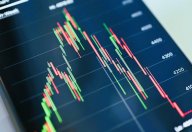
Mortgage rate forecast for 2025 and beyond
Explore the latest mortgage rate forecasts, with third-party predictions and how to trade CFDs linked to rate movements.
13:00, 28 May 2025

Is the S&P 500’s recent rally a sustainable V-shaped recovery?
The S&P 500’s recent bounce has investors wondering if we’re seeing a true V-shaped recovery or just a dead cat bounce.
06:00, 23 May 2025

What affects the price of gold? Key factors explained
Gold has captivated investors for centuries. But what affects the price of gold today goes beyond its historical allure.
06:00, 23 May 2025

Largest economies in the world
Discover the largest economies in the world by GDP, their impact on global markets, and what they mean for traders.
15:03, 22 May 2025

Filecoin price prediction: Third-party price target
Here are the latest Filecoin price predictions and forecasts for 2025 and beyond, based on insights from third-party analysts and market experts.
10:46, 21 May 2025

Pi Network price prediction: Third-party price target
Discover the Pi Network coin price predictions for 2025 onward, with analyst outlooks, price targets and CFDs trading strategies on Capital.com.
11:01, 16 May 2025

Capital.com reports $656 billion in client trading volumes in Q1 2025
Staff numbers surpass 1,000 as the company grows its bench strength across tech and engineering teams
08:57, 15 May 2025

What is PI coin?
Learn about the PI coin (PI) cryptocurrency and its blockchain – Pi Network – which launched on 20 February 2025.
09:40, 13 May 2025

Best AI stocks for traders
Discover the best AI shares on the stock market, which factors to consider, and how to trade them via CFDs.
07:29, 13 May 2025

An extremely rare signal just triggered on the stock market
A powerful contrarian indicator has just flashed on the S&P 500.
20:11, 12 May 2025
